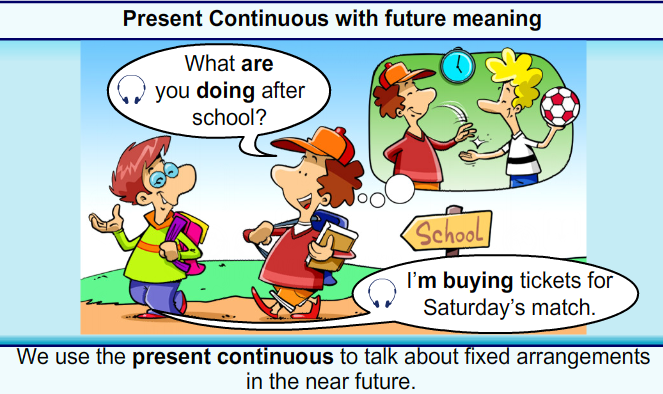Het arrangement Preparation for the test is gemaakt met Wikiwijs van Kennisnet. Wikiwijs is hét onderwijsplatform waar je leermiddelen zoekt, maakt en deelt.
- Auteur
- Laatst gewijzigd
- 04-01-2021 18:00:35
- Licentie
-
Dit lesmateriaal is gepubliceerd onder de Creative Commons Naamsvermelding 4.0 Internationale licentie. Dit houdt in dat je onder de voorwaarde van naamsvermelding vrij bent om:
- het werk te delen - te kopiëren, te verspreiden en door te geven via elk medium of bestandsformaat
- het werk te bewerken - te remixen, te veranderen en afgeleide werken te maken
- voor alle doeleinden, inclusief commerciële doeleinden.
Meer informatie over de CC Naamsvermelding 4.0 Internationale licentie.
Bronnen:
7ESL. (2020, 6 april). Will Vs Going To: Differences Between Will And Going To. Geraadpleegd van https://7esl.com/will-vs-going-to/
Present continuous with future meaning. (2015). [foto]. Geraadpleegd van https://grammartop.com/present-continuous-with-future-meaning/
Rania English. (2016, 8 november). Past Progressive. Geraadpleegd van https://www.youtube.com/watch?v=RJAqKEljAFw
Grammar Monster. (2020, 29 april). Future Perfect Progressive Tense. Geraadpleegd van https://www.youtube.com/watch?v=p89G9_DJeBY
Learn English on Skype. (2014, 26 juli). Future Perfect. Geraadpleegd van https://www.youtube.com/watch?v=dXQycMakyRw
Aanvullende informatie over dit lesmateriaal
Van dit lesmateriaal is de volgende aanvullende informatie beschikbaar:
- Eindgebruiker
- leerling/student
- Moeilijkheidsgraad
- gemiddeld
- Studiebelasting
- 4 uur 0 minuten




